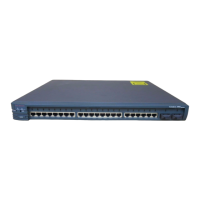Table 26: Accounting AV Pairs
STOPINTERIMSTARTAV Pair NameAttribute Number
AlwaysAlwaysAlwaysUser-NameAttribute[1]
AlwaysAlwaysAlwaysNAS-IP-AddressAttribute[4]
AlwaysAlwaysAlwaysNAS-PortAttribute[5]
SometimesSometimes
7
NeverFramed-IP-AddressAttribute[8]
AlwaysAlwaysAlwaysClassAttribute[25]
AlwaysAlwaysAlwaysCalled-Station-IDAttribute[30]
AlwaysAlwaysAlwaysCalling-Station-IDAttribute[31]
AlwaysAlwaysAlwaysAcct-Status-TypeAttribute[40]
AlwaysAlwaysAlwaysAcct-Delay-TimeAttribute[41]
AlwaysAlwaysNeverAcct-Input-OctetsAttribute[42]
AlwaysAlwaysNeverAcct-Output-OctetsAttribute[43]
AlwaysAlwaysNeverAcct-Input-PacketsAttribute[47]
AlwaysAlwaysNeverAcct-Output-PacketsAttribute[48]
AlwaysAlwaysAlwaysAcct-Session-IDAttribute[44]
AlwaysAlwaysAlwaysAcct-AuthenticAttribute[45]
AlwaysAlwaysNeverAcct-Session-TimeAttribute[46]
AlwaysNeverNeverAcct-Terminate-CauseAttribute[49]
AlwaysAlwaysAlwaysNAS-Port-TypeAttribute[61]
7
The Framed-IP-Address AV pair is sent when a valid static IP address is configured or w when a Dynamic Host Control Protocol (DHCP) binding exists for
the host in the DHCP snooping bindings table.
802.1x Readiness Check
The 802.1x readiness check monitors 802.1x activity on all the switch ports and displays information about
the devices connected to the ports that support 802.1x. You can use this feature to determine if the devices
connected to the switch ports are 802.1x-capable. You use an alternate authentication such as MAC
authentication bypass or web authentication for the devices that do not support 802.1x functionality.
Catalyst 2960-X Switch Security Configuration Guide, Cisco IOS Release 15.0(2)EX
OL-29048-01 277
Configuring IEEE 802.1x Port-Based Authentication
802.1x Readiness Check
